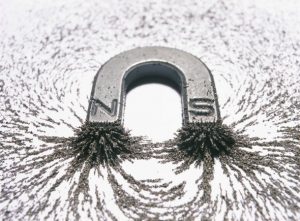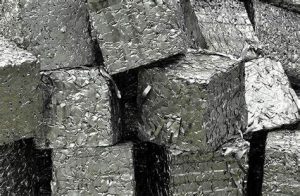
Stainless steel has long been around. Since the 1990s, many sectors have been using stainless steel to build skyscrapers, monuments, and even kitchen utensils.
You are likely to be surrounded by artifacts of stainless steel such as saucepans, handrails, pen springs, or watches. And if you use shipping containers, exhaust systems, cable trays, or process piping, you likely use stainless steel every day at job.

Ⅰ. Some Stainless Steel Can Be Magnetic
Stainless Steel is, in most instances, a non-magnetic material. This is not true for all stainless steel kinds, though. The magnetic characteristics of Stainless Steel rely on its microstructure.
Stainless steel can be divided into five groups:
- Austenitic
- Martensitic
- Ferritic
- Duplex
- Precipitation Hardening

Ⅱ. Stainless Steel Can Stain
Stainless Steel comes from a family of corrosion and oxidation-resistant materials. This provides rust and unsightly blotches the capacity to withstand. Stainless steel generates a thin oxide layer that coats the metal when subjected to oxygen and humidity. It repairs itself fundamentally.
Yet steel is not difficult to stain, despite its name and resistant nature. Over time, the protective layer breaks down, resulting in pitting and corrosion.
You must frequently clean its surface to preserve stainless steel and guarantee that the steel has an appropriate supply of oxygen.

Ⅲ. One of the most recycled materials on the planet is Stainless Steel
Approximately 88 percent of the world’s steel is recycled, according to the American Iron and Steel Institute. In addition, two out of three tonnes of fresh steel are made of ancient steel.
In addition, the steel sector recycles steel by-products, including mill scale, steel slags, and liquid processing. It is also possible to recover and reuse steelmaking dust and sludge to create other metals, such as zinc.
Ⅳ. Many reputable companies generate stainless steel soap, which is fundamentally a piece of stainless steel in the form of a soap bar.
While stainless steel soap does not kill germs or other bacteria such as regular soap, stainless steel soap on the hands can neutralize powerful odors. After managing garlic, onion, or fish, simply rub the bar on your hands. The smell is supposed to vanish.
Why has this distinctive property in stainless steel? Some scientists hypothesize that in different substances the stainless steel binds to sulfur compounds, reducing odors.

Ⅴ. Stainless Steel Expands and Contracts
Due to its elevated temperature oxidation resistance, Stainless Steel is useful in the nuclear power and aerospace industries. Although it has a much greater strength than many other metals, when the temperature differs, stainless steel continues to expand and contract.
Because of this, when producing a steel frame for a building, the construction sectors have to account for heat development. For example, during the summer, the Eiffel Tower is about 984 feet tall (not including the antenna). But the steel tower is about 6 inches shorter on cold days.
-
-

Stainless Steel Mesh Silver Dress
Ⅵ. Stainless Steel Can Be Woven and Worn
-
Stainless steel is extremely ductile, meaning it can be drawn into a thin wire without losing its toughness. Many manufacturers of stainless steel manufacture stainless steel mesh which is sufficiently fine and pliable to wear.
Stainless steel clothing is thermal and resistant to radiation, and is therefore often used in the electrical and textile sectors.
Stainless steel thread is a main element of the technology sector and is frequently used in touchscreen gloves. The presence of an electrically conductive item (such as a finger) can be detected by capacitive touch screens. Electricity is conducted by stainless steel gloves in a manner that imitates the electrical current of a finger.
Some companies also weave fibers of stainless steel into carpets. The stainless steel protects static electricity from building up, thereby decreasing the probability of static electric shock.

